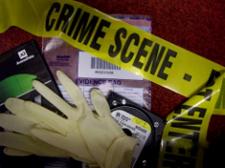Aggregated News

Widely used methods to trace complex DNA samples, bullets, tread and bite marks to criminal defendants fall short of scientific standards, limitations that federal prosecutors and judges should seriously consider before entering forensic evidence in trials, a presidential panel urged Tuesday.
The unanimous report by the 20-member President’s Council of Advisors on Science and Technology does not advocate banning testimony or putting limits on tools used for investigations.
But when it comes to evidence at trial, the report says, the Justice Department and federal judges should give greater weight to scientists’ view of forensic evidence, particularly in light of a landmark 1993 Supreme Court decision that ruled courts should act as gatekeepers and admit only “scientifically valid” expert testimony.
The council’s co-chairs said in an interview that scientists were not telling judges what to do. But they said they hoped the report would ensure the scientific reliability of forensic techniques used in thousands of cases each year.
“For a forensic science to be scientifically valid, you need actual, empirical evidence of its reliability and accuracy, period,” said Eric S. Lander...



